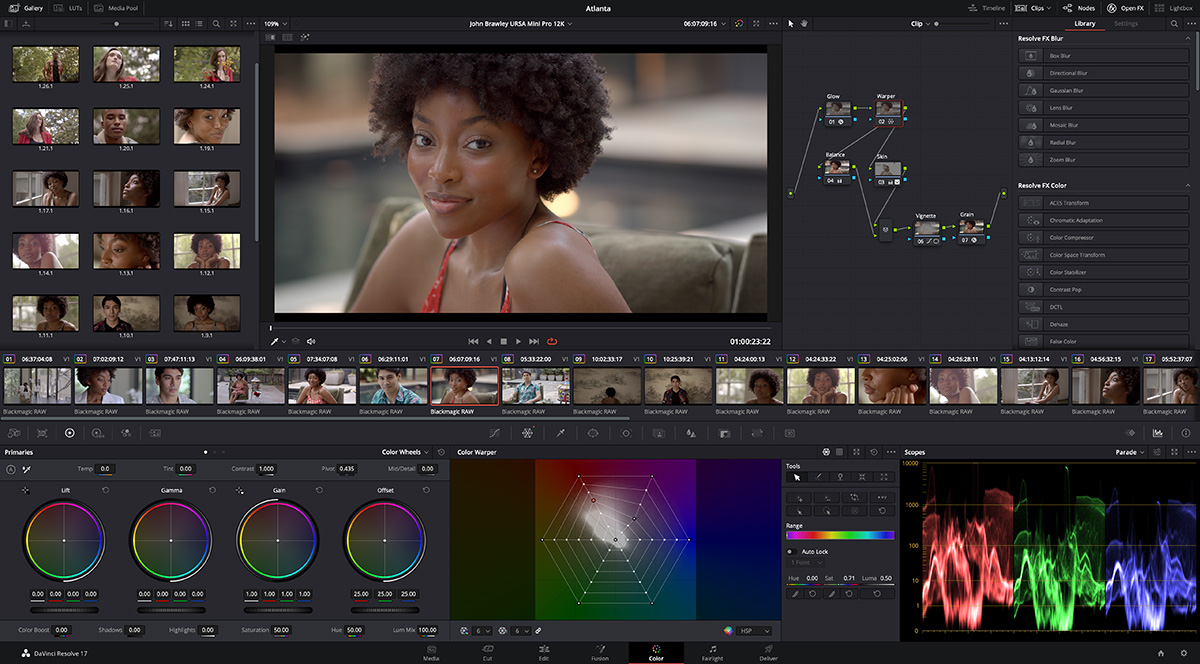


Now, here’s the instance where I do recommend using the eyedropper tool present in the same tab. The Hue vs Hue tool will help you change the Hue of a selected area seamlessly. On that note, let’s go ahead and look at another way to correct skin tones or even the skies bluer without pulling a key at all. If you feel you are selecting more areas that are red than just the skin tone, you can always use your Power Windows to restrict your selection to just the skin.From this point, don’t forget to use the “Matte Finesse” tools such as Denoise and Blur radius to get a clean key.This will automatically just select the Red areas present in the shot from where you can narrow down your selection.You can find it in the upper menu bar, Color>Presets.The best way to do this is to use the Six vector tool already present in Davinci Resolve. The better way to approach such scenarios when color grading 8 bit footage in Davinci Resolve is, to make broader keys or qualifications to start with.

For example, if you are trying to key out the skin, don’t use the eyedropper tool because you will end up with a very messy qualification in Davinci Resolve. So, stop using Qualifiers when working with 8 bit footage.īut if you must, have to qualify something, and you are left with no other option. The reason is that a camera capable of only recording 8 bit footage tends to record less color information hence it becomes difficult for a color grading software such as Davinci Resolve to distinguish between two shades of the same color.Īs I said, that can make it difficult to pull keys.

So one of the main problems with 8 bit footage is that if you get heavy with the color grade, the image can start to fall apart or break, especially if you’re trying to pull keys or trying to qualify something using the qualifier tool present in Davinci Resolve. If you’re not sure what 8 bit, 10 bit, and 12 bit means it’s a way of describing how many colors a camera can record. Lighting on the set not only increases the production value of the shoot but also helps you achieve that separation on the set itself.Ī lot of times that manipulation is what causes 8 bit footage to break. The reason I include this as my first advice is that being able to correctly light subjects can save you a lot of effort and aggravation in post-production because you won’t have to perform as much manipulation of the image. The first recommendation I have is to understand some lighting principles and invest in yourself before you even turn on your camera. 6 Tips When Color Grading 8 Bit Footage In Davinci Resolve 1. In this article, I will share 6 Tips When Color Grading 8 Bit Footage In Davinci Resolve much more effectively, whether it’s from a GoPro, a drone, or a DSLR. What’s going on, fellas? Hello and welcome back to Filmmaking Elements.


 0 kommentar(er)
0 kommentar(er)
